Photographer's Journey From Fear of Sharks to Passion for Conservation
Mar 31, 2016
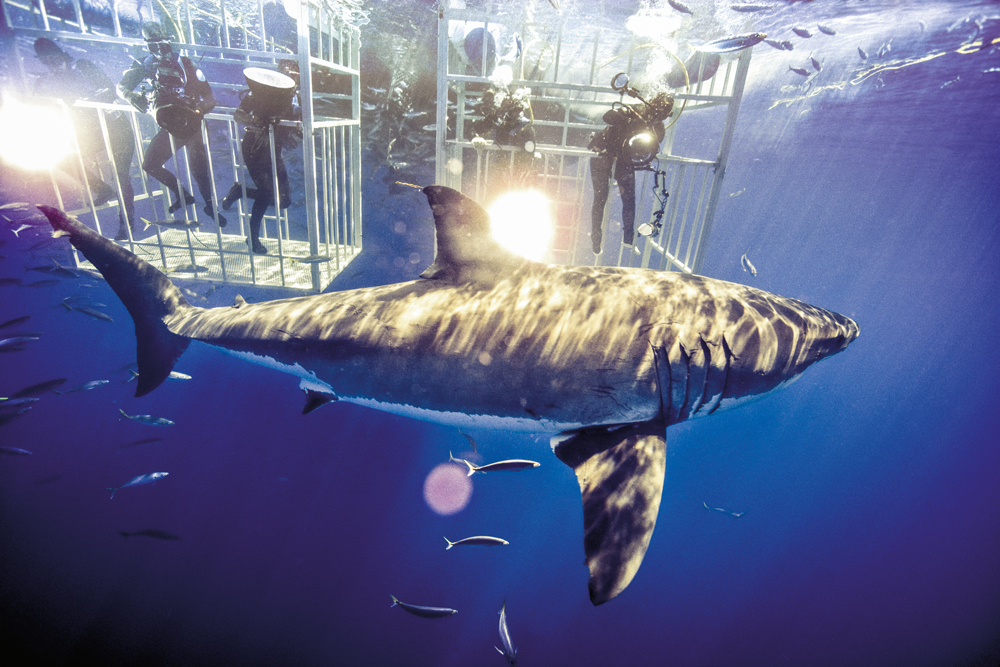
“From the time I saw Jaws I had a very big fear,” says photographer and shark conservationist Michael Muller. From beneath a jaunty Mohawk he fixes the camera with a roguish gaze. “Growing up surfing in northern California, San Francisco, the Bay Area, there’s lots of great white sharks. It’s always on your mind. You’re out there surfing and you’ve got this underlying fear that a shark’s going to come up and kill you.”
It’s difficult to understand why Muller has dedicated the past 10 years, thousands of hours work and untold amounts of money to saving nature’s most feared predator – and, perhaps, its most misunderstood. But Muller lives to break the mould. In a career that has taken him from world-class triathlete and pioneer of snowboarding photography to the artist behind the shutter that created some of today’s most iconic movie posters and celebrity portraits, he is constantly reinventing himself.
“I think most people can relate to it,” he says. “Everyone has a fear of something. Sharks were probably the biggest fear I could quantify in my life. But to face that fear and go after it, and to have it shift so differently that it became this passion of mine, it’s so fulfilling.”
Whether racing Lance Armstrong, creating the next X-Men movie poster or free diving with great whites, Muller enjoys tackling big challenges, pushing his own limits and breaking new ground. And in a life spent defying narrow definition, his current drive to photograph sharks and promote their conservation, undertaken with his signature gusto and zest, has raised the curtain on a global stage.
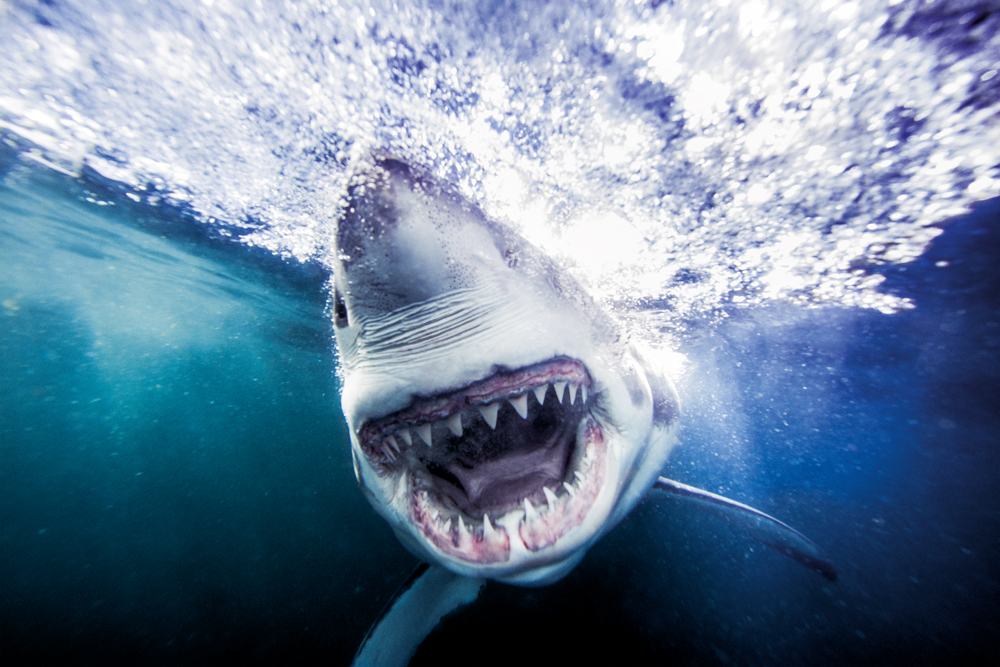
“With sharks, there’s a false perception that the media and we put on them, you know, all blood and teeth, when, in fact, the opposite is almost always true. They’re very smart. And they’re not after us. They want the fish.”
Sharks always grab the headlines, even as humans debate the case. While what seems to be a spate of attacks on swimmers and surfers has provoked calls for shark culling in Western Australia, our decimation of global shark populations has Muller and other conservationists up in arms. They believe that sharks, which swim at the top of the food chain, are crucial to preserving the delicate ecosystem of the oceans and ensuring our own food supplies.
To awaken people to the beauty and plight of sharks, Muller has crossed the oceans and sailed the seas, swimming with these beasts that people love to hate, tirelessly documenting them, speaking with images that reveal the shark’s – yes – quasi-humanity. His decade-long quest will culminate in the spring with the release of Muller’s first book of photographs, Sharks: Face-to-Face with the Ocean’s Endangered Predator, from publisher Taschen.
“I’ve been shooting people for 25 years,” he says. “And now I’m using my skills to show people this animal, this planet, in a way they’ve never seen it. Maybe I can change how they think about the planet. Maybe I can change their attitude, their actions towards this planet.”
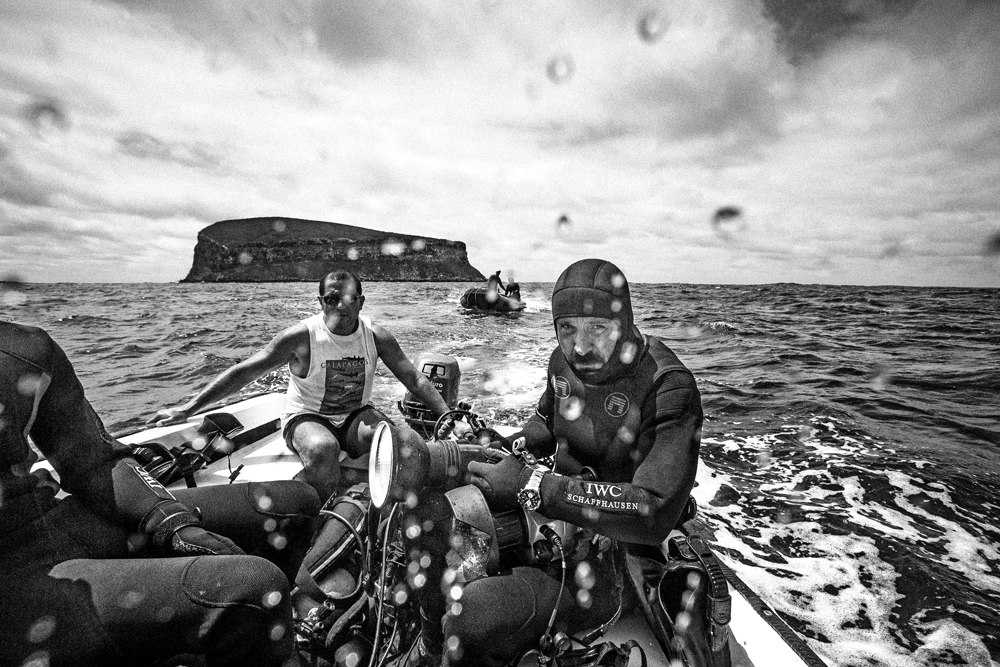
The cynics will scoff, but Muller’s record is proof that his can-do attitude and activity pay off. His patrons are a Who’s Who of A-list athletes and Hollywood celebrities, he’s a global advocate for the United Nations, and he has taken his shark-saving campaign, White Mike, to the four corners of the world. He has launched a shark-inspired clothing line with Billabong, started a photography school for children and invented a new kind of underwater light for shooting his toothy friends.
“I have three daughters and I don’t know if, 10 years from now, my girls will be able to see some of the animals I’m shooting now. The way it’s going, chances are they won’t.”
It was during a shark-spotting trip in the Galapagos, a two-week, seaborne expedition, that Muller had a kind of epiphany about life, work and everything else. “At one point I was up on top of the boat by myself and the sense of fulfilment was so powerful. I love what I do. It’s great shooting The Avengers and all these famous people. But when I’m underwater, shooting these animals, with lights I invented, doing things no one has ever done, I feel that’s what my life is supposed to be.
“So the juxtaposition of taking this fear and making it such a huge passion is a very interesting fact of my life. I never would have guessed sharks would have altered my life the way they did.”
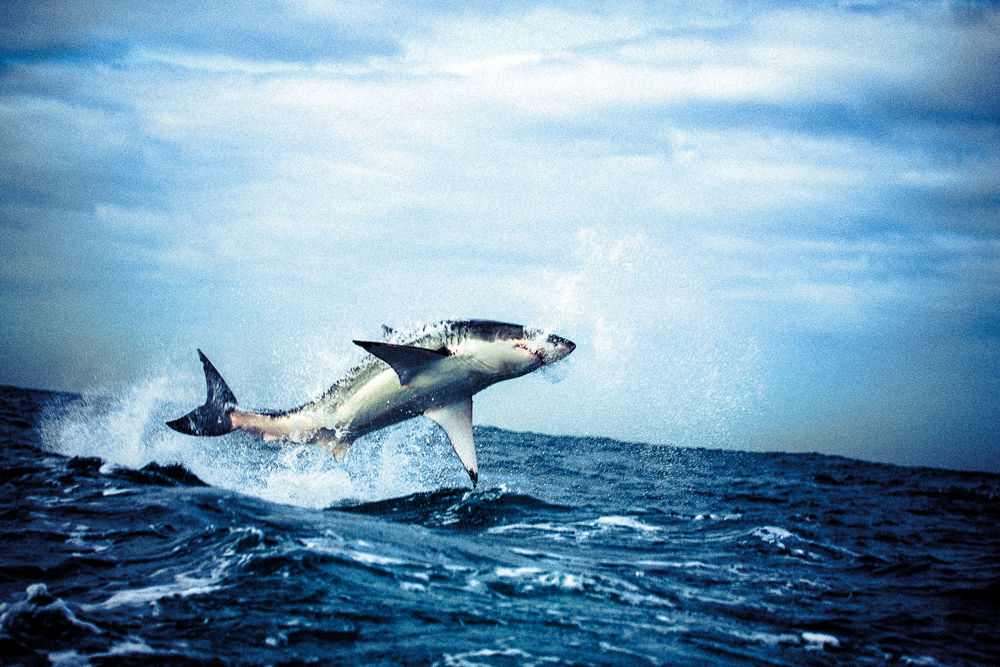
Muller’s life was never going to be ordinary. While still a child, his father was posted to Saudi Arabia as project manager on the construction of Jubail, which was to become an oil boom town, on the then pristine shores of the Persian Gulf.
“Hong Kong was the first place I visited when we moved to Saudi Arabia,” Muller recalls. “My father’s hobby was photography and I still remember, when we stopped in Hong Kong, he bought a bunch of lenses. The camera stores are everywhere. The first camera he gave me was a Weathermatix waterproof film camera. I picked it up at a young age.”
Muller’s first lasting experience of photography was to take an image of a shark in a magazine. The image was said to have illustrated a fisherman’s tale he had told his schoolmates about visiting the Red Sea – a place he had yet to see. His young friends took the bait. Muller later confessed to plagiarism but had felt the power of working with images. He was hooked.
The shutter bug was one of the gifts he inherited from his father, who decided to parlay his expatriate-sized salary, minimal living expenses and long periods of leave into extended expeditions to exotic destinations. “Every three months we’d travel around the world. As a kid we had a big wall map of the world and we’d look at it and say, ‘OK, where do we wanna go? Let’s go to India. Let’s try Sri Lanka. Let’s go to Egypt.’
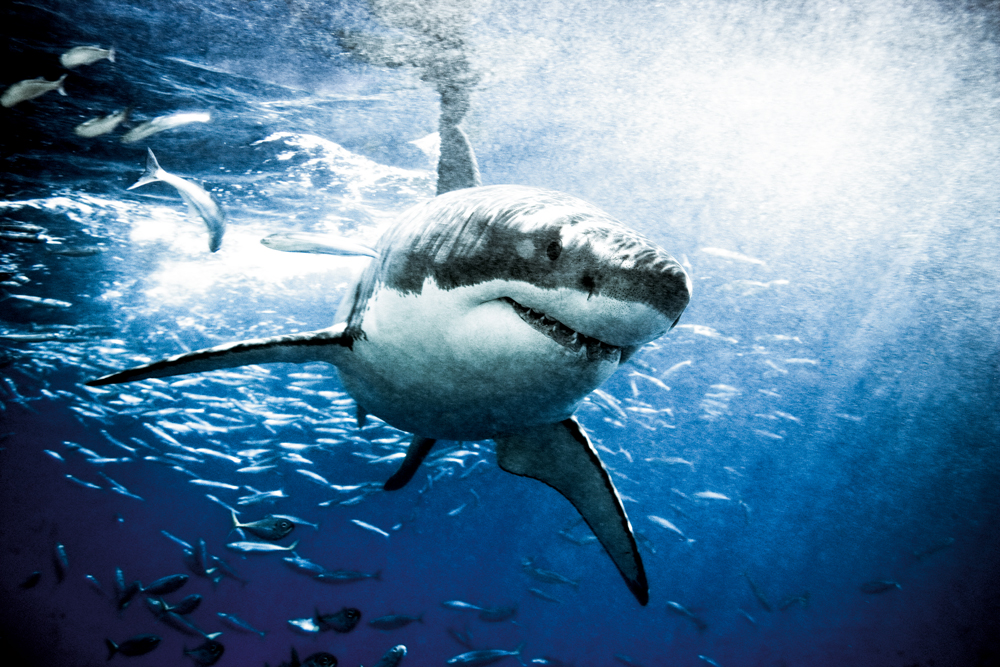
“As a young man, I got to go ride around the Pyramids at midnight on horseback; through graveyards, with the light show going on the Sphinx; and to Africa, in the middle of Masai Mara Kichwa Tembo, to see all the different cultures and people. Cameras were always around and they definitely had an influence on me, as did adventure, as did animals.”
But it was war that planted in Muller the seed of the activism that would grow to blossom years later. “Growing up in Saudi Arabia, we lived on the Persian Gulf. I would snorkel and scuba dive there, at 10, 11 years old, on untouched reefs. And it was Desert Storm, seeing all that oil in the gulf, covering all these animals where I used to dive. That’s what impacted me the most.”
Muller had already made it as a photographer when he embarked on his mission to save sharks. After covering the snowboarding scene in the United States as it took off in the Rocky Mountains in the 1980s, he went on to document the fast times of Hollywood’s up-and-comers. By the time his wife gave him a birthday present of a shark dive in Guadalupe he had an established career.
That first shark dive stirred up a perfect storm that propels him to this day. He dived enclosed in a safety cage and couldn’t wait to get out of it. “I’m just like that. I want to be swimming with that animal. But when you see it, it’s 18 feet long, like two cars going by you, bumper-to-bumper, with teeth.”

After that first dive, Muller hooked up with legendary diver and cameraman Morne Hardenberg and spent hundreds of hours underwater with sharks: tiger sharks, hammerheads, bull sharks – schools of bull sharks.
“Morne’s taught me. He’s like my mentor. He’s the shark whisperer. He’s gotten me to be able to swim with great whites. There’s a small number of people who will get out of the cage and swim with great whites with no protection and Morne is one of them.”
The great white shark is believed to be one of the oldest species on earth, dating back some 400 million years. “There’s a reason why they’ve been around so long: they’re incredibly smart,” Muller says.
“There’s two ways they interact with humans. One is when they’re curious. They come in slowly and they circle around you, each time getting a little closer. They test things out with their mouths. The other way a great white approaches is like a missile, at 35 mph, when they’re coming to eat. And they’re all about the element of surprise. There’s very few places in the world where you can actually free dive with great whites because you need clear visibility, you need to see them.”
And what a sight they are. “Great whites aren’t like any other shark. With sharks, especially with great whites, you have to be the predator at times. A few years ago, one started coming up at me, at, like, 30 mph. I’m holding my camera, doing my flippers, looking down and going, ‘OK, it’s coming at me’, when, over my right shoulder, I see Morne take off like a fighter jet, holding his camera out swimming straight down at the shark.
“The shark did a 180-degree turn and swam off. Morne became the predator and went after the shark. The shark was over three times his size, but with his camera and lights and everything coming right at it, the shark decided not to mess with him.
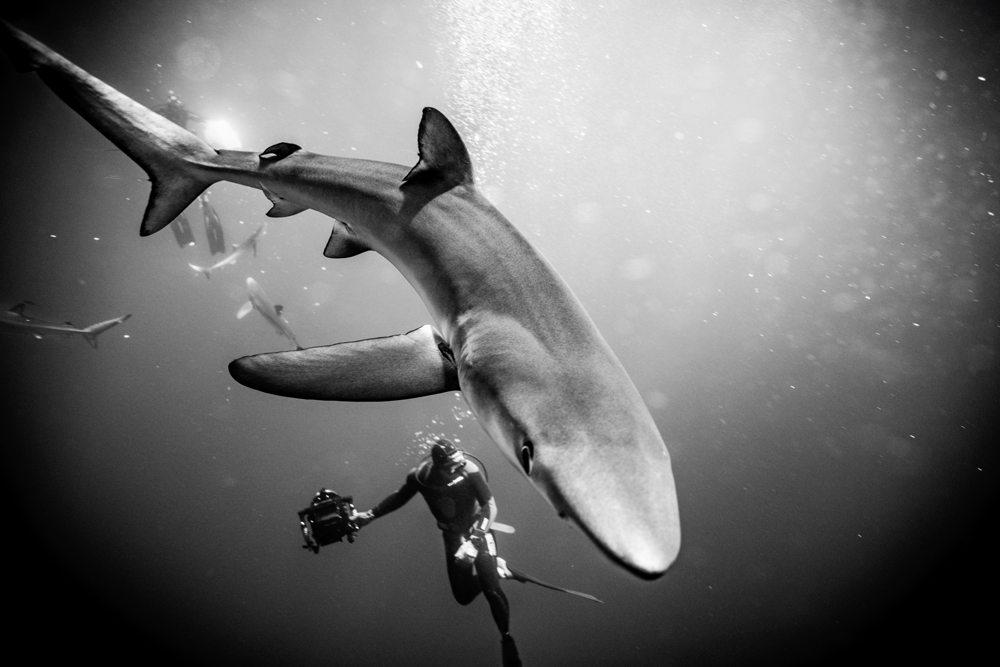
“Last year, Morne and I were diving, and two sharks came up at us like missiles. He went after one and I went after the other. Sure enough, they turned off. I’d learned, you know. It goes against everything your brain says. It’s pretty exhilarating stuff. You have to remain very humble. It’s constant vigilance, you know. One mistake, and you’re dead.
“People always ask me: ‘Why do you do it? Why do you swim with sharks with no cage?’ Finally, it hit me. I was down there with a great white and I thought: when you’re with this animal, you’re so in the moment, so entirely and purely in the moment, that it’s like there’s nothing else in the world.”
Perhaps it was an attempt to capture the moment that inspired Muller to invent his unique, 1,200-watt underwater strobe lights.
“I couldn’t bring the shark to the studio. So I had to bring the studio to the shark. I had a long road with those lights. They didn’t exist. I had to fabricate them. I got ripped off. I spent a lot of money. I almost gave up. For a while I wondered, ‘Who am I to invent underwater strobe lights?’ But then I said, ‘No, I’m going to make it.’ Now I’ve got five patents.”

Training for triathlons as a teenager taught Muller the importance of harnessing his will to reach his goals. “No matter what your body tells you, you just override it and keep going. I’ve definitely used that in my life to get where I am now; talking about this book that I’ve done with Taschen, a publisher I’ve dreamt of working with for 20 years, and I’m doing it.”
Muller will need every scrap of that can-do spirit for the road ahead. Human activity is wiping out sharks at the rate of nearly 100 million a year – somewhere between 6 per cent and 8 per cent of the population – too fast for them to regenerate.
There is some hope. The two main threats to sharks can be averted. Those threats are finning, or deliberately catching sharks, cutting off their fins and dropping the fish back into the sea, and accidentally trapping sharks in the nets used by commercial fishers. Of course the trade in shark fin is so lucrative that none of the traders is inclined to stop.
“I don’t point fingers,” Muller says. “Everybody’s responsible. Some people blame China because a lot of demand comes from this part of the world. But, at the same time, a lot of those sharks are being caught off American shores and the fins are being flown in on American Airlines, Delta and United.”
He hopes the book, Sharks: Face-to-Face with the Ocean’s Endangered Predator, will help educate readers and motivate them to take action. He’s attempting to take the fight to ignorance, apathy and greed – not commercial fishermen and restaurateurs that serve shark’s fin soup. At a deeper level, he’s aiming to dispel the darkness enveloping the human heart that leads to an urge to kill what we don’t understand, and to blow it away with 1,200-watts strobe lights.































